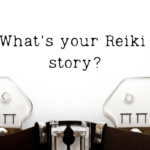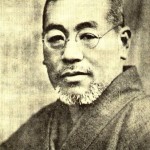Article by Angie Webster
Mrs. Takata brought Reiki to the West from Japan at a very difficult time. There were enormous tensions between the United States and Japan when she returned to Hawaii, just years prior to the attack on Pearl Harbor. All things from Japan were feared and hated during the years prior to Pearl Harbor, and especially so afterwards. Discussing Reiki must have been a huge challenge, requiring bravery. After the attack, she was completely isolated in the West as a Reiki Master. Her own Master, Chujiro Hayashi, was dead and the Gakai in Japan had become a secret society in order to avoid regulation or shut down. She had learned Reiki as a widowed mother who encountered Reiki in Japan during a visit to her parents. She had been ill and sought Reiki to avoid surgery for a multitude of health issues. She was amazed and stayed on to learn, working at Hayashi’s for clinic to pay for her training as she learned.

Image by Pavel ahmed
Mrs. Takata changed a number of things about the way she taught Reiki. She did not use a manual, as Hayashi did, but taught a strictly oral form of the classes. She would not even allow students to tape record the classes or write down the symbols or take notes during class. Everything had to be done orally. Rand’s research shows that this was not how Usui or Hayashi taught and that Takata received a manual when she learned, so we can only speculate why she chose to do this. She also standardized the hand positions so that all treatments were the same and she did not use techniques that were used in the Japanese tradition. Takata also swore her students to a very strict code about what to charge for training new Reiki students and Masters, such as the fee of $10,000 for Reiki Master training, which is almost never used today.
One thing Mrs. Takata changed a great deal was the story of Reiki. Most say she adjusted her story according to the group she was speaking to and seldom told the Reiki story the same way twice. Most say it wasn’t that she was lying, it was that she had a method of telling a story in a very Hawaiian style, which calls for embellishment and understanding the dynamics of the group you are speaking to. Or maybe she simply felt isolated and felt a need to create a wonder and respect for Reiki in her own way. We are ever in her debt for bringing Reiki to the West and around the world in such a difficult time, forging forward and protecting it in whatever way she could.
Reiki has evolved tremendously since Mrs. Takata died in 1980 and continues to spread. Some swear by “tradition” and don’t want to see a change at all. Others are eager to embrace rapid change. As you can see, change has been part of Reiki from the beginning. Careful, constructive change can only benefit. Rigidly clinging to old ways that don’t make sense any more or that weren’t based in fact, doesn’t serve us or our clients.
Free eBook download: We’ve created an eBook with our best articles on this topic, and offer it for free to all our newsletter subscribers.


Angie Webster
Angie Webster is a Reiki Master, Teacher, and Author. Angie’s primary focus is animal Reiki, which she adores. She teaches online Reiki Level One, Animal Reiki, flower essences, and various personal growth courses.
Angie is the author of “Animal Reiki: How it Heals, Teaches & Reconnects Us with Nature” and “Reiki from A to Z”. You can follow her at: https://angie-webster-school-of-reiki.teachable.com





Thank You. I’ve enjoyed your take on both of these pieces. And I’ve learned something from each of them.